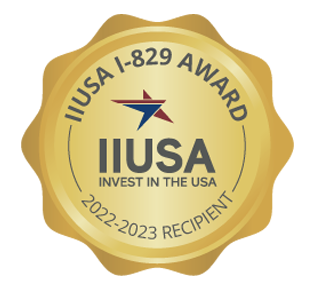The U.S. Congress introduced the EB-5 visa program in 1990 to stimulate U.S. economy by creating a pathway for foreign nationals to attain U.S. permanent residence or green card. To qualify, prospective EB-5 investors need to invest in a qualifying EB-5 project and create American jobs. This can be achieved in two ways: (1) through direct investment in a qualifying business or (2) investing in a U.S. Citizenship and Immigration Services (USCIS)-designate dregional center. While these options are similar, there are some key differences to keep in mind when deciding how to proceed.
Investment Avenues
- Direct Investment
- Through a direct investment, EB-5 investors can choose to invest in a business of their choice if they can show it is feasible to create 10 new American jobs in the near future. While the investors are in control of their funds initially, they may find themselves investing more capital than anticipated in creating and maintaining 10 new American jobs whether the EB-5 business is meeting its commercial goals or not. The flipside is that EB-5 investors can make uncapped gains if the business flourishes and get immigration benefits. In addition, direct investors are not limited to making a solely cash contribution.
- Regional Center
- The other EB-5 investment option is investing through a USCIS-designated EB-5 regional center. EB-5 regional centers are private entities that have been designated by and is in good standing with USCIS to raise EB-5 capital for qualifying EB-5 projects. The EB-5 investors start the process by investing qualifying investment amount in a special purpose entity (usually a limited partnership or limited liability company). This is entity is managed by the EB-5 fund manager. The EB-5 fund is formed to either make a preferred equity investment in a qualifying EB-5 project or provide debt to a qualifying EB-5 project. The project is responsible for creating the qualifying American jobs on behalf of the EB-5 investors. Majority of the EB-5 applications are made through a USCIS-designated regional center because (i) it does not require EB-5 investors to be involved in day to day operations; (ii) the investment amount is capped; and (iii) because it is a pooled investment model that takes into account direct, indirect, and induced job creation, usually surplus jobs are created thereby increasing the likelihood of success of the EB-5 application.
Job Creation
In order to qualify for an EB-5 visa, the EB-5 investors are required to create at least 10 new full-time American jobs. The jobs are required to be created and maintained before the filing of petition for removal of conditions on permanent resident status.
- Direct Investment
- For individuals considering the direct investment route, it is important to note these jobs must be directly created by the venture that received your capital investment. Therefore, understanding how jobs will be created and the longevity of each position will be vital to your success as an EB-5 investor.
- Regional Center
- By contrast, direct, indirect, and induced jobs correlated to an EB-5 regional center investment count towards the EB-5 investors application. This means that jobs created by supplier industries, induced jobs, and employment in local communities due to an increase in spending power by workers employed by the regional center project count towards qualifying EB-5jobs. Since there are many other job creation avenues through regional center investing, EB-5 applicants typically have a large job cushion, which results in an easier process.
Documentation
- Direct Investment
- Direct EB-5 investors are required to appoint a specialized EB-5 attorney for documenting and filing their direct EB-5 application. Direct EB-5 is a very involved process. The EB-5 attorney is not only required to document the source of funds of the EB-5 investors, but they also must draft an EB-5 business plan showing creation and maintenance of 10 new full-time American jobs. Further, the EB-5 investor needs to maintain evidence of job creation such as payroll records, insurance, and tax returns.
- Regional Center
- EB-5 investors who work with a regional center to invest their EB-5 capital have a partner through the process. The regional center compile and complete all project-specific documentation. The regional center provides all project related documents to the investor’s immigration attorney for their perusal to enable the filing of the EB-5 visa application. The primary work of an attorney in a regional center EB-5 application is to document the source of funds of the EB-5 investors and file the application with USCIS.
Involvement
- Direct Investment
- Direct EB-5 participants must take an active management role in the entity they are investing in. A pending EB-5 application does not give the EB-5 investor the right to live and work in the United States. Therefore, if the EB-5 investor is based outside the United States, in order to qualify, they may have to authorize a person in the United States to run their business. For applicants who are based in the United States on a non-immigrant visa (such as a work visa like H-1B or a student visa), managing the day-to-day operations of the new entity may conflict with their status and jeopardize their immigration.
- Upon successfully receiving the conditional green card, EB-5 investors also need to consider their living situation. Direct investors may have to reside in close proximity of their business to demonstrate active involvement in the entity.
- Regional Center
- EB-5 Investors investing in a regional center project have a comparatively passive role in managing their investment. They are not restricted by geography in terms of their residence. Further, the passive nature of investment gives them the freedom to study, work or start their own venture.
For more information on GGG and EB-5, please follow us on YouTube, Twitter, Facebook, LinkedIn and Instagram.


